Telescope maker and comet hunter from Crimea
There's no better discovery than a comet!
Gennadiy Borisov
Stories about space travel led him to astronomy. He was impressed by the knowledge that he himself could construct a telescope. Although he studied astronomy, he gave up his scientific career and began making telescopes. His dissatisfaction with the result kept him driving further, longing to create the perfect device. At first only to take nice pictures of the sky, then to search for comets. And he did it. Discoverer of the first interstellar comet, Gennadiy Borisov.
When did you become interested in astronomy?
Astronomy caught my interest as a child. As a 12-13 year old I started reading books and magazines about astronomy. I was fascinated by science fiction movies and I read a lot of books about space travel. From there it was just a step towards stargazing.
At the age of 14 - 15 I started making small telescopes from available optics. They were very simple and gave a poor image. But I met a guy who showed me how to grind telescope mirrors and I was impressed. I started making mirrors, spending a lot of time. I did it all at home, I even cooked the polishing resin.
So I made a simple Newton telescope with a diameter of 130 mm. Then I started grinding larger and larger mirrors. The result was a mirror with a diameter of 265 mm. However, military service and studies at Moscow University did not allow me to complete my telescope. So it remained unfinished.
Why did you decide to study astronomy?
Astronomy was my main hobby and I couldn't imagine not being involved in it in the future. Therefore, I decided to study astronomy at Moscow State University M.V. Lomonosov.
Where did you start working after graduating?
After graduating, I got a job at the Crimean Laboratory, which belongs to the Sternberg Astronomical Institute (GAIS). First I studied nearby binary stars, namely cataclysmic variables. I wrote articles for scientific journals and I also devoted my time to the production and modernization of photometers.
Gradually, my interest turned to optics. We had a small workshop. There I made optics for telescopes, which were later installed in many observatories.
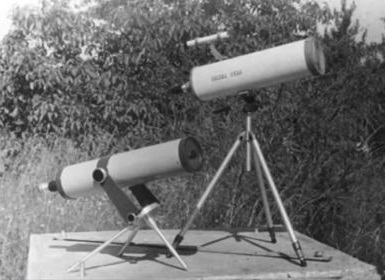
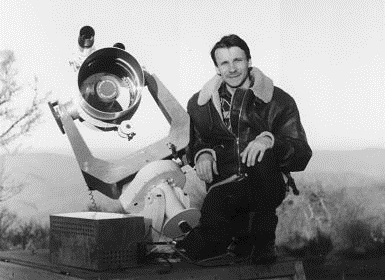
After 2000, I finally stopped observing on Sternberg Astronomical Institute (SAI) devices and I worked exclusively on new telescopes. That's why I moved from being a researcher to a technician. Now, in general, I work part time as an engineer. I help in the modernization of telescopes.
In the 1990s, you began to devote your time to astrophotography. What objects did you like to photograph?
I started photographing planets for a photographic film. You can imagine what poor quality these shots were. I admired photographs from professional observatories and longed to shoot the same. I wondered how to get better results. Only when I started using a telescope with larger diameter and with better luminosity, I could target nebulae, galaxies and star clusters. Between 1996 and 1997 there were two bright comets on the sky, Hyakutake (C/1996 B2) and Hale-Bopp (C/1995 O1) and I photographed them. I liked it. I had been taking pictures of the comets for several years until I found out that such photography no longer satisfied me, I wanted to search for new comets. I examined the negatives by blink comparator, unfortunately I did not find any comets. In 2008 I started using Canon 5D digital SLR. Previously unsuspected possibilities in the visualization of the starry sky as well as in the processing of observations became real.
What brought you to decision to construct a special telescope for comet hunting?
I found out that the image of diffuse objects on a classical photographic film depends on the lens speed of the used device. The faster the telescope, the better the nebula's image. The nebulae were displayed in poor quality in my first photos. I went to my colleague optician, Valery Terebizh, and asked him how to decrease the focal ratio of my equipment. He designed a telescope with short focal length ratio, then I grinded the mirror and constructed a new telescope. As I was not satisfied with its performance, I sold it. Again, I visited Valery and asked him to design an even better mirror and he proposed another solution. So I constructed several telescopes of different types until I came to a device that met my expectations. They were 20-30 in total and now all they are being used for observations all over the world. Only in 2010, when I attached a CCD camera to my telescope, I started to be satisfied with the results.
Where did you look for inspiration how to search?
At first I had no system. I consulted Timur Kryachko and Leonid Elenin, they are both searching for comets. And I studied all available books and magazines about comet hunting.
Where do you observe from?
Because I lived at the Observatory, I had my equipment mounted on the territory of the observatory. I started my search with two identical telescopes. I named them GENON.
What were the parameters of this telescope?
The GENON telescope had a mirror diameter of 20 cm, the field of view was 7 x 7 degrees, and at 5 minute exposure I reached the 19th magnitude in the zenith. On the horizon, I have captured comets in 16.5 magnitude, but not fainter. With this equipment, I discovered my first two comets C/2013 N4 and C/2013 V2.
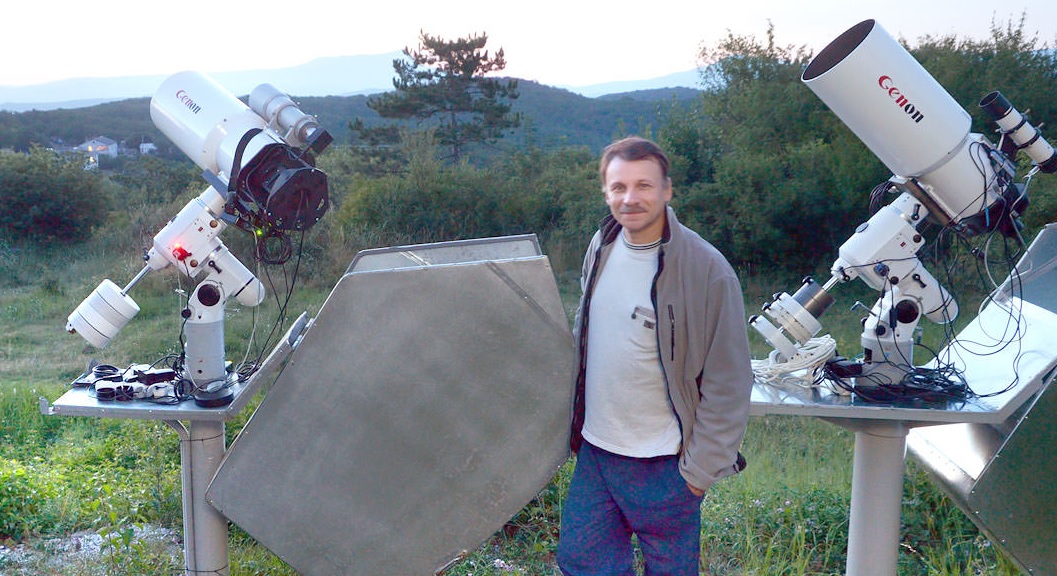
Do you recall the feeling when you found your first comet C/2013 N4?
It was a euphoria. It was before dawn on July 8, 2013, during the Russian-Ukrainian meeting of amateur astronomers "Southern Night", which took place on the premises of the Crimean Astrophysical Observatory. And I remember waking my wife, "I discovered a comet!" She was, of course, also excited.
I couldn't sleep, I checked the MPC for its observation from others. It was my first discovery, and at that time I didn't know how to report a new comet. I sent my observation, but the MPC didn't accept it. So I called Leonid Elenin. He advised me in what form and what data to send in the report. They accepted my corrected report the next day. The news of the comet discovery was quickly spread among the participants of the ongoing meeting, and so it was observed by many others the next night. Their observations were also sent to the MPC.
In October 2013, you discovered the near-Earth asteroid 2013 TV135. It is a PHA object, a potentially dangerous Apollo asteroid. How was it?
I reviewed my images and noticed a fast-moving object. Four days later I observed another area of the sky and again I saw an unknown object. It was moving as fast and in the same direction as the one from the other night. I usually didn't care about asteroids, I thought it was a waste of time for me. That's why I called Leonid Elenin and offered him to send it as his observation. He didn't want to, he has enough of his own discoveries. Subsequently, I addressed Timur Kryachko with the same offer. He discovered several dozens of asteroids and also tried to hunt for comets, but unsuccessfully. I sent him my data, he looked at them and said that it was a near-Earth asteroid. He began to convince me that this was a more valuable object than a comet. "There's no better discovery than a comet!", was my first reaction. But he finally convinced me that it was worth it, so I sent the data to MPC.
A month later, you discovered your second comet. Was it the same feeling as at the first discovery?
Of course, I was thrilled same as the first time. My second comet was in the Milky Way at a time of discovery.
Your first two comets were found from the Crimean Astrophysical Observatory (095). Subsequently, in November 2013, you obtained your own observatory code. Was it easy to get?
I moved my equipment about one kilometer away, and more experienced colleagues helped me get the code. In early November, I observed three well-known asteroids over three nights and sent the measurements to the MPC. Two weeks later I had my own code L51. I called the site MARGO (Mobile Astronomical Robotics Genon Observatory).
The GENON telescope brought you success in the discovery of two comets, so what "forced" you to design even better one?
Yes, GENON was fine, but I had the opportunity to build a larger telescope and started working on two pieces at once. It was the same system as the "small" GENON, only the diameter of the mirror was 30 cm. I named my new scope as GENON Max.
What was the difference between small GENON and GENON Max?
The design was the same (Shenker-Terebizh), the diameter of the mirror was larger by 10 cm. The field of view was 4.8˚ x 4.8˚ and at the 3-minute exposure I reached the limited magnitude of 19.5.
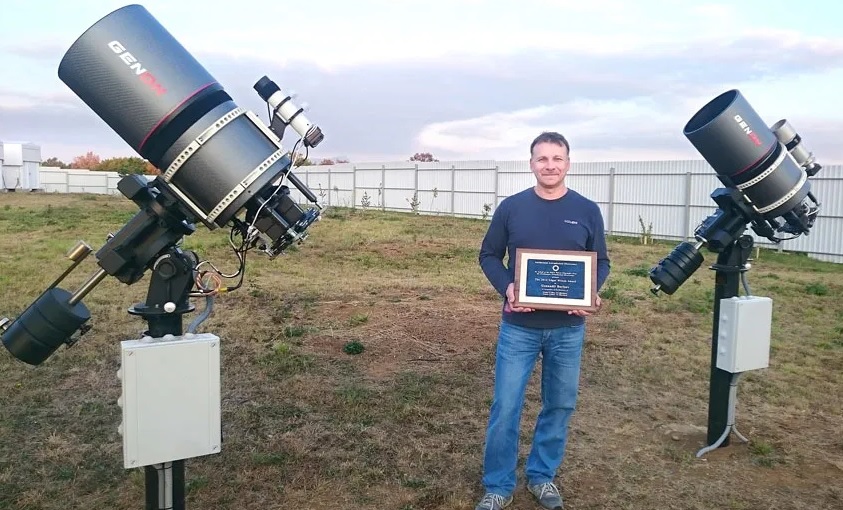
In November 2014 you began to search with two GENON Max telescopes. And you gradually discovered three comets. Each year, new comet: C/2015 D4, C/2016 R3 and C/2017 E1. Since 2016, however, you had worked on an even larger telescope. Although GENON Max had proved to be a successful and effective comet hunter, were you not satisfied with the instrument?
I used the GENON Max to observe near the horizon. Larger telescopes look high. Searching on the horizon is challenging, I wanted to pay more attention to observation around the zenith. I thought that if I built an even bigger instrument, I might not find many new comets, perhaps one or two. I had a 50-cm telescope, but I sold it, and I built a new 65-cm telescope to observe in the zenith.
You called your previous instruments GENON and GENON Max, did you also find a name for this new telescope?
I call it HGB-650. Being a Hamilton astrograph, I refer to it as Hamilton of Genadiy Borisov.
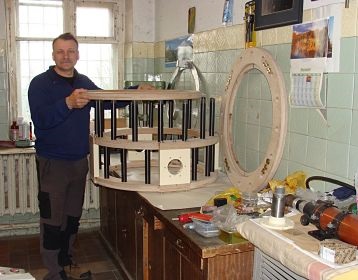
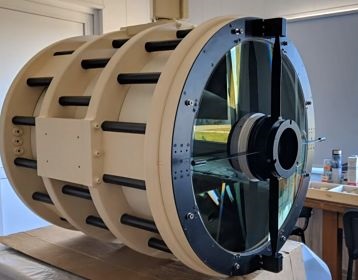
What are the parameters of HGB-650?
The mirror diameter is 65 cm, field of view 128´ x 128´ and at 60 second exposure the limited magnitude is 20. For observation I use FLi ML16803 CCD camera.
When did the telescope see the first light?
Works on the telescope lasted two years until the end of 2018. I began observing in January 2019, but the weather was often bad. In early August, I found a Mars crosser. I "stole" the discovery from the ZTF project. But the new comet discovery didn't come...
Weren't you nervous about it?
Hiking is the best relax for me. I went to Caucasus for few days, and walking, I was considering where to aim my telescope to find a new comet finally. And I decided that despite my original intention to use this telescope for observation at the zenith, I would try to direct it above the horizon before dawn.
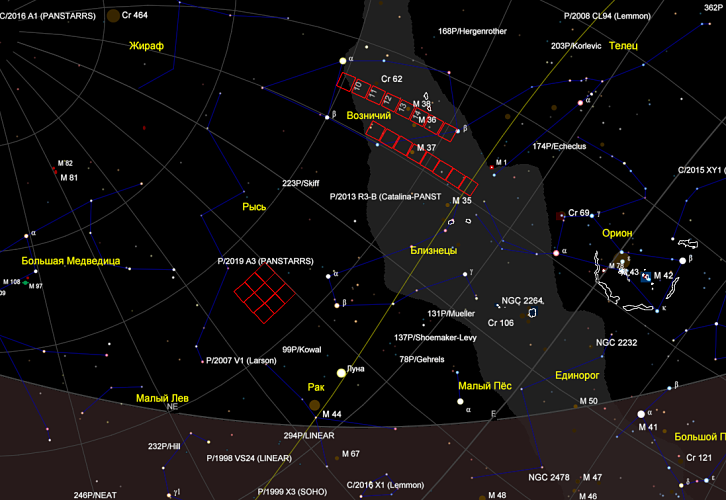
At the end of August 2019 it was proved, that your decision was well done. You discovered an interstellar comet. How was it?
On the night of August 29-30, I observed 28 fields. On the last frame almost completely on the edge, just a few pixels from the edge, I noticed a moving diffuse object. I wasn't quite sure if it was a comet or an asteroid. I wondered how to report it. My wife advised me: "send it as a comet, if it turns out it's not, they'll reclassify it." So I sent it as a comet. And immediately on forums comments began to appear about its strange orbit. They considered my observations wrong. But I was sure my measurements were correct. Gradually, more data were added and the orbit elements did not change significantly, so I wrote them to try to calculate the orbit without my observations. The track was still the same. After 11 days the announcement about discovery of this interstellar comet was published.
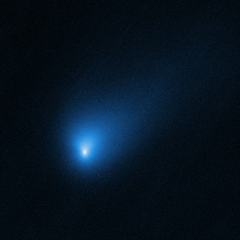
When you first saw the comet C/2019 Q4, you couldn't have guessed it would be such an extraordinary object...
I had no idea it would be such an unique discovery. It was only after a few days when they began to analyze its high eccentricity on forums and when it turned out that it was not an erroneous observation.
Three days after this discovery, you added another object to the NEOCP under the designation gb235. What was it?
It was also a comet, but not a brand new one. It was the recovery of the periodic comet P/2008 Y1 (Boatini), the first observation in the second observed return. The comet received definite number 387P/2008 Y1 = 2019 R1 (Boattini).
How does your observation night look like?
I don't observe every night. It is difficult. Not the observation itself, but the data processing. Two hours of observation requires 5-6 hours for evaluation. I try to observe before dawn, two, maximum three hours, sometimes I try in the evening, but I prefer morning observations.
I observe with two telescopes as I have two CCD cameras. HGB-650 and Genon Max. I bought another camera. I move the camera from HGB to Genon Max and I install there a new FLI ML9000. The new one has better sensitivity.
In the future, I am planning to use two telescopes, one larger for observing dim objects and one with a large field of view for capturing nice comets.
How do you check your images?
I make images of the selected areas of the sky three times. Then I run an animation in MaxIm DL on my computer. And I'm looking for moving objects. Usually there are many asteroids, 50, sometimes up to 100 in one shot. Only if an object moves in a different direction, I do astrometry and verify the object in the MPC database to see if it is a known or unknown object. If it is new, I will send its positions to the MPC.
During the day you work as a technician and you hunt for comets during the night. How can you describe your daily job?
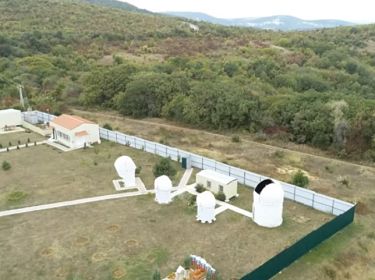
I work for the Astronomical Science Center (ASC) where I am the head of the department. There are several telescopes in the area and between them there are also a few of my older telescopes. I control if they work flawlessly and I supervise a team of observers. The company allowed me to place my three telescopes here as well. So I have more free time. During the day I can process my images and observe at night.
I've been making telescopes for a long time. I made them to order. Someone ordered telescope and I made it. I made them for various organizations. My devices are located all over the world and they observe from Kamchatka to South America. My task was to make money. Now I'm making new telescopes on behalf of the company. It is good for them to use my technology and for me it is good that I am on their property, I have electricity, internet, protection and that I can observe from there. In addition they pay me for it. The ASC has four own observatories - in the Caucasus, Kislovodsk, Blagoveshchensk in Siberia, Yerevan in Armenia and then Nauchny, Crimea.
On the first day of November 2019 you found your ninth comet. Was it still exciting?
Yes, as always, it was a pleasant feeling. I found the comet in the Milky Way between a huge number of stars. I had no chance to take its picture with a larger telescope. I saw that it was diffuse and was moving, and I wanted to see it with a 2.6 m telescope. Unfortunately, the weather was bad, and there was no free observation time at my colleague. They tried to observe it on a 1-meter telescope in Kazakhstan, but they didn't catch it, the Moon was disturbing. At the time of discovery the comet was far from the Sun and was about 19,5 magnitude. It was on the edge of my device´s visibility.
You are ranked 4th on the list of amateur comet discoverers behind W. Bradfield (18 comets), M. Honda (12) and D. Machholz (12). You found nine comets in seven years. What is the secret of your success?
Lots of observations, little sleep and a lot of fatigue. State-of-the-art telescope and many observations under a good sky. Then it is statistically certain that the discoveries will come.
Will you tell us your strategy how to overtake the big surveys?
Observe before dawn just above the horizon or in the area of the Milky Way. These are places where big surveys are rarely aimed, so there is a chance to find something. If you point the telescope at any other place, there is no chance. At the same time, every piece of the sky is being watched by several large telescopes. And in the Milky Way it is difficult to observe. Surveys evaluate data with special software, not visually. I rely on my eyes, it is difficult, but I can recognize a moving object even in a flood of stars in the Milky Way. If an unknown body passes in front of a star, the software will not detect it.
I review images very quickly, usually one frame in ten minutes. However, if I have a lot of images to check, I review one field in 5-6 minutes. If the weather is bad for 5-10 days, I return to the already checked images and recheck them.
You said that the discovery of comets by amateurs would end soon. At present, almost everything is found in big surveys. How much time remains for amateur discoveries?
Another new big surveys will appear soon. They will scan the entire sky up to 22-23 magnitude. It will be very difficult for amateur astronomers to discover something new. I think that we have two, at best five years, and it will come to an end.
Do you want to discover more comets?
My goal is to discover ten comets. So there is only one left to meet my goal, but I may be looking for it all my life.


